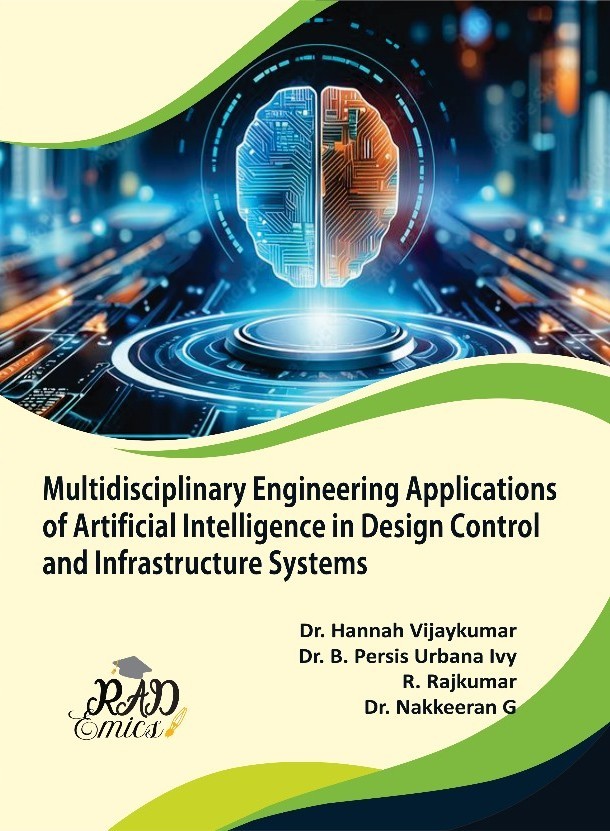
Peer Reviewed Chapter
Chapter Name : Machine Learning for Smart Traffic Management and Urban Infrastructure Planning
Author Name : Jyothi D G, Y Shobha, Mohite Madhavi Abhijit
Copyright: ©2025 | Pages: 39
DOI: 10.71443/9789349552609-08
Received: 22/03/2025 Accepted: 15/06/2025 Published: 06/09/2025
Abstract
The rapid urbanization of modern cities has led to complex traffic management challenges, requiring innovative solutions to optimize traffic flow, reduce congestion, and improve overall urban mobility. Machine learning (ML) has emerged as a transformative technology in smart traffic management and urban infrastructure planning, offering unprecedented capabilities for real-time traffic prediction, dynamic signal optimization, and efficient incident response. This chapter explores the application of ML techniques in the management of urban traffic systems, with a particular focus on advanced algorithms for traffic signal optimization, predictive traffic modeling, and the integration of real-time data sources such as GPS, IoT sensors, and social media feeds. By leveraging these technologies, cities can enhance their ability to predict and respond to traffic events, ensuring smoother, safer, and more sustainable transportation networks. Furthermore, the chapter examines the challenges associated with data integration, system scalability, and privacy concerns, while proposing future research directions for the continued evolution of ML-driven smart city solutions. Key topics covered include real-time traffic flow prediction, adaptive traffic signal control, incident detection, and the integration of crowdsourced data for dynamic event monitoring. This work provides valuable insights into how machine learning can revolutionize urban traffic management, making it more responsive, efficient, and resilient to the demands of modern urban environments.
Introduction
Urbanization has dramatically transformed cities across the globe, resulting in increased traffic volumes and growing concerns over congestion, pollution, and inefficiency in transportation systems [1]. As cities continue to expand, the complexity of managing urban mobility has reached unprecedented levels [2]. Traditional traffic management systems, which typically rely on fixed schedules and manual intervention, are becoming less effective in responding to the dynamic demands of modern urban environments [3]. With the rise of smart city initiatives, cities are increasingly adopting advanced technologies, such as machine learning (ML), to address these challenges [4]. ML provides a data-driven approach to optimize traffic flow, reduce congestion, and enhance overall urban mobility by continuously learning from real-time data, enabling more responsive, efficient, and sustainable transportation networks [5].
Machine learning, a subset of artificial intelligence, has revolutionized the way cities approach traffic management [6]. Traditional systems often depend on pre-programmed traffic signal timings and manual adjustments, which are reactive rather than adaptive [7]. ML, on the other hand, can process massive amounts of real-time data generated by sensors, GPS devices, cameras, and even social media feeds to identify patterns and make dynamic decisions [8]. These systems can predict traffic flow, optimize signal timings, and adjust to real-time events, such as accidents or road closures [9]. The ability of ML algorithms to learn from historical data ensures that traffic management systems become progressively smarter and more effective as they are exposed to different traffic scenarios over time [10].
One of the most significant advantages of ML in smart traffic management is its ability to predict traffic conditions and optimize traffic signal timings in real time [11]. By leveraging vast amounts of data from connected vehicles, IoT sensors, and traffic cameras, machine learning models can predict traffic congestion and adjust signal patterns to ensure smoother traffic flow [12]. For instance, during peak hours, these systems can extend green light durations on busy intersections or implement dynamic lane management strategies to prioritize specific traffic routes [13]. Such adaptability is a significant improvement over traditional traffic management systems that rely on fixed schedules or manual adjustments, which cannot effectively handle the fluctuations of traffic patterns in a timely manner [14].